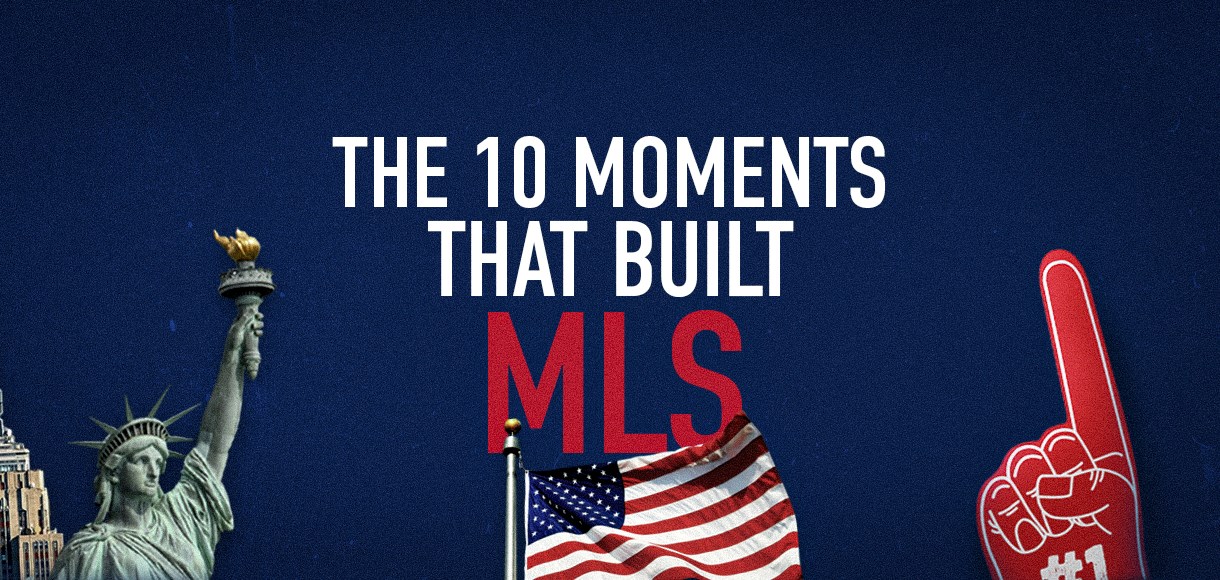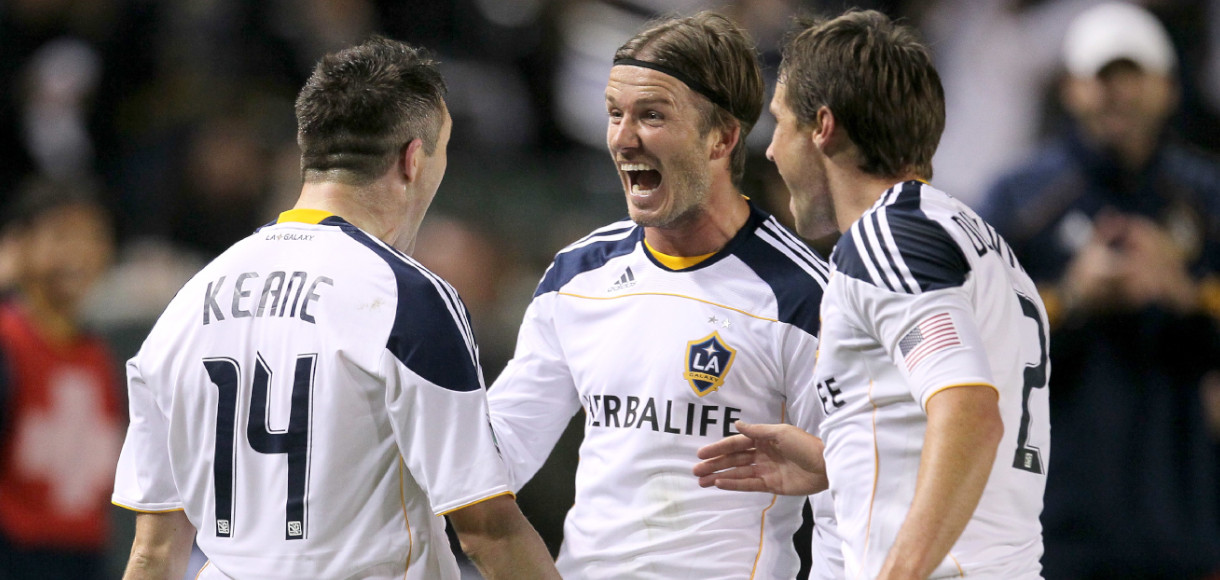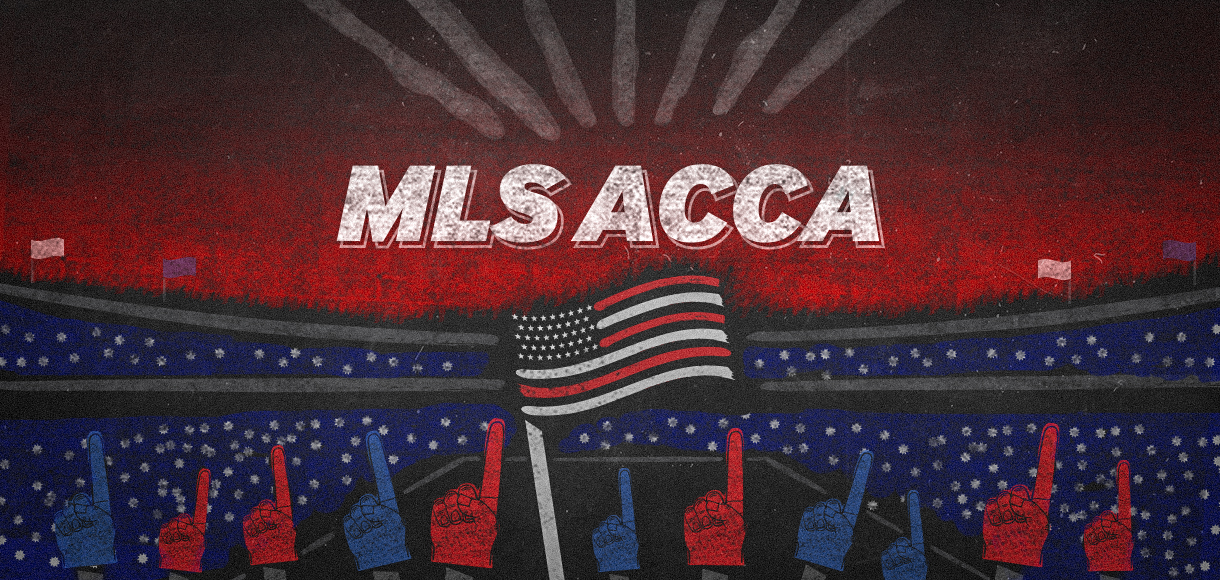The 10 moments that built MLS

With MLS commissioner Don Garber setting his sights on the league being the best in the world in 25 years, we look at how how it got to where it is today.
1994: USA World Cup
This was the spark. Without the 1994 World Cup, MLS would not exist in its current guise today.
The tournament was awarded to the USA in 1988, three years after the collapse of the NASL – a league that had been the country’s flagship competition before becoming financially unsustainable.
The deal was that in return for being awarded the World Cup, the US Soccer Federation would establish a top-level professional league in the country.
And what a platform they were given to market one from.
“We’re Americans, we’ll turn up for the big events. We love hype,” says US-based sports writer Beau Dure, author of Long-Range Goals: The Success Story of Major League Soccer.
He’s right. The tournament broke attendance records, attracting an average of 68,991 fans per match and 3.58m overall – both of which still stand today despite the World Cup’s expansion from 24 to 32 teams.
“I think it showed that there were fans out there,” says Dure.
“We love our American sports: football, baseball and basketball, but ’94 showed that people will actually go out and see soccer.
“It opened a lot of eyes.”
1996: Inaugural match
The next step was to keep the party going for another two years.
Despite originally planning to launch in 1995, MLS didn’t get going until April 1996.
It was a wait longer than many would have liked, with fears that soccer would lose its momentum before even getting off the ground.
“There was a little bit of alarm,” says Dure.
“We’d seen a couple of soccer booms before, but they just weren’t lasting. The wait meant that they originally had trouble getting owners to buy in.”
But any worries about enthusiasm dampening soon disappeared.
A sell-out crowd of 31,683 packed into San Jose’s Spartan Stadium for San Jose Clash v DC United on 6 April 1996 – the first MLS match in history.
It was also broadcast on ESPN, the first time a domestic soccer game was televised across the nation.
The match itself was short on quality and ended 1-0 to the Clash, with 88th-minute goalscorer Eric Wynalda later admitting that ‘everybody was nervous' - the late goal meaning it would have thrown up a few surprises in the live betting market.
But that didn’t matter; soccer had arrived.
2002: USA reach the quarter final of the World Cup
But six years on, the boom looked to be coming to an end, with MLS in a sorry state.
Expansion had gone backwards, with the number of teams reduced from 12 to 10, and the league was losing money every year. There were just three owners left in the league, with businessman Philip Anschultz owning six teams on his own.
“MLS was reeling and nearly went out of business,” says Dure.
Having lost an estimated $250m in its first five years, along with reducing attendances, the league's future looked uncertain at best.
What a time, then, for the United States’ national team to have the best World Cup in their history, reaching the quarter finals in Japan and South Korea.
It was, as Dure explains, a spectacle that the American public really bought into.
“It became this great cultural thing of people getting up in the middle of the night to watch the games from the other side of the world,” he says.
“Bars opened at 2:30am to accommodate crowds, it was a phenomenon at the time.
“It sustained MLS over the next couple of years, so that it could build and helped the profile of certain players, too.”
A then-20-year-old Landon Donovan was named Young Player of the Tournament and a new national hero was born, while the subsequent interest in soccer was substantial enough to drag MLS out of the mire.
What followed was another surge of popularity for the game, resulting in nine straight years of increased attendances.
2005: Salt Lake City gets an expansion team
Salt Lake City is the 110th biggest city in the USA in terms of population, with an estimated 213,000 people living there.
For context, that’s just 2.5 per cent of the of the number of people in New York.
When Real Salt Lake joined MLS in 2005, all of the other cities represented in the league were among the 50 largest in USA, and it remains the smallest with a team by some distance.
In short, it is not where you would expect a burgeoning sporting venture to expand into only nine years after its launch.
If there was anywhere soccer would fail, it would surely be somewhere like Salt Lake City.
But it was a risk that paid off. RSL drew an average attendance of 18,037 in its first season – 3,000 more than the league’s average – and remain an established side today.
Success in Salt Lake City was one of the biggest signs yet that people across the nation were buying into the league.
2007: David Beckham joins LA Galaxy
It’s no coincidence that in the same year Beckham moved from Real Madrid to LA Galaxy, MLS saw a 9.6 per cent increase in overall attendance.
Beckham was arguably the most marketable footballer in the world at the time and, having arrived after a season in which he featured 31 times for Real Madrid, was still clearly an asset.
But it was off the pitch that he made his biggest impact.
“I think it was more that Beckham broke down the door and got teams to spend. They’re now willing to spend multi-million dollars a year to have people come in,” says Dure.
“Beckham changed the front offices more than he changed the game itself.”
Arriving in a league that had a salary cap, his $6.5m-per-year contract required the introduction of the Designated Player rule, which allowed the cap to be bypassed for certain players.
There are now 65 players in MLS who are taking advantage of the rule.

2007: Toronto move the needle
Cross-border participation with Canada is common in major league sports.
The Toronto Raptors compete in the NBA, the Blue Jays in the MLB, there are eight Canadian NHL teams, while three MLS franchises are from north of the border.
The first of those was Toronto FC in 2007. But while introducing a Canadian team was a landmark moment in itself, it was the franchise’s approach to fan culture that made the biggest impact.
Toronto joined MLS with a purpose-built 30,000-seater stadium, which was more compact than the NFL grounds that most teams had been sharing up to that point. Seven out of 13 teams did not play in a soccer-specific stadium.
Crucially, though, Toronto’s ground was easily to fill, enhancing the sense of occasion at each match.
“I went to a MetroStars game in the Giants stadium in the early days and the crowd was just swallowed up by empty seats,” says Dure.
“You had maybe 10,000 people rattling around in a stadium that seats 70,000. The atmosphere was horrible.
“Franchises being able to control their own venues has led to the growth of supporter culture. That was a big part of Toronto’s impact.”
Toronto sold out BMO Field in its first MLS season, with a further 15,000 joining a waiting list to get tickets. Today, meanwhile, 17 of the 24 teams in MLS play in soccer-specific stadiums.
2011: Expansion on the west coast
Prior to 2011, there wasn’t a soccer team within 840 miles of Seattle Sounders, who themselves had only joined MLS two years earlier.
Along with the Sounders, the only other west-coast representation came in the form of San Jose Earthquakes and LA Galaxy.
Compare that to a tally of nine teams in the eastern half of the USA and Canada – including a cluster of four in the north east – and there was a clear dichotomy.
Then Portland Timbers and Vancouver Whitecaps came along.
Following the expansion on the west coast, the aggregate attendance jumped 36.7 per cent on the previous year – the biggest rise in MLS history.
2015: New York gets its second team
New York City is box office. It is biggest city in the USA in terms of population, has the highest GDP in the country and is arguably the most recognisable place in the world.
So, that there wasn't a soccer team playing within the city – the Red Bulls set up camp across the Hudson River in New Jersey – was clearly a big opportunity being missed.
MLS sought a buyer for one as a priority as long ago as 2006, Dure explains.
“They jumped ahead in the expansion line – other places that had been pushing for a long time,” he says.
“Sacramento’s not going to draw the attention worldwide that a New York team is.”
MLS commissioner Don Garber explored options to resurrect the now-defunct New York Cosmos and also spoke to the New York Mets, before a deal was struck with Manchester City and the New York Yankees to found a new club in the city that would play at Yankee Stadium.
“They have the fanbase and good attendance figures. In terms of global positioning, it was a big thing," says Dure.
“They’re also affiliated with Manchester City so that helps, while also being a little controversial. But controversy sells, right?”
Indeed it does. Aggregate attendances rose 18.5 per cent on the previous year during New York City’s first season in MLS.
2015: Gerrard, Pirlo, Villa and Kaka touch down
Not that it was merely the introduction of a team that drove an increase in attendances.
If David Beckham opened the door for more players joining MLS from Europe, then this was the realisation of that.
There had been big names since his arrival in the United State - Thierry Henry spent four successful years with the New York Red Bulls after leaving Barcelona in 2010 - but never such a glut of talent at once.
Steven Gerrard (LA Galaxy), Andrea Pirlo (New York City) and David Villa (New York City) had all represented their countries in the 2014 World Cup, while Kaka (Orlando City) is simply footballing royalty.
“It’s a pretty big deal if players are coming over while they’re still viable,” Dure explains. “I think it produced a bit of legitimacy.”
Villa’s arrival in the United States had been met with particular surprise. That the league could attract a player who would have been able to play in one of Europe’s top leagues was a statement.
The then-33-year-old had been a key component in Atletico Madrid’s 2013/14 La Liga-winning squad, scoring 13 league goals in 36 games.
His MLS career was, unsurprisingly, a success. He left New York City in 2018 having netted 80 goals in 126 appearances, also winning one MVP award in 2016.
2017: Atlanta United get going
Atlanta United were the side that proved MLS could be scaled up to the level that is seen in the top European leagues.
All 10 of the biggest regular season attendances in MLS history were home games for Atlanta, while they also account for five of the top six crowds in play-off history.
In terms of establishing a rich supporter culture, they picked up the baton from Toronto FC.
“Now it’s expected that you’ll have a bunch of people in there playing drums and a bunch of people chanting during the games,” says Dure.
“It’s expected that the whole stadium will have the atmosphere that used to be generated by a few hundred people in the early days.”
Nothing tells the story of the successful expansion of MLS better than that.




































